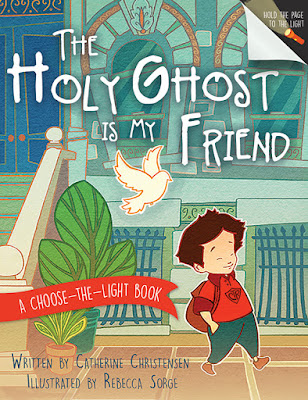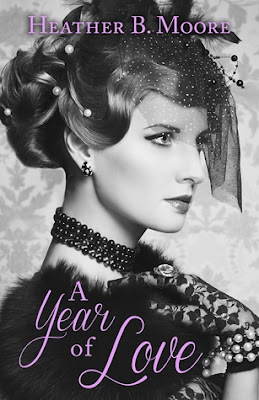 Lori
Benton was raised east of the Appalachian Mountains, surrounded by
early American history going back three hundred years. Her novels
transport readers to the eighteenth century, where she brings to life
the Colonial and early Federal periods of American history. When she
isn't writing, reading, or researching, Lori enjoys exploring and
photographing the Oregon wilderness with her husband. She is the author
of "Burning Sky," recipient of three Christy Awards, "The Pursuit of
Tamsen Littlejohn," Christy-nominee "The Wood's Edge," and "A Flight of
Arrows."
Lori
Benton was raised east of the Appalachian Mountains, surrounded by
early American history going back three hundred years. Her novels
transport readers to the eighteenth century, where she brings to life
the Colonial and early Federal periods of American history. When she
isn't writing, reading, or researching, Lori enjoys exploring and
photographing the Oregon wilderness with her husband. She is the author
of "Burning Sky," recipient of three Christy Awards, "The Pursuit of
Tamsen Littlejohn," Christy-nominee "The Wood's Edge," and "A Flight of
Arrows."
Q: Have you always enjoyed studying history? What drew you to writing specifically
about 18th-century America?
I had no particular interest in history as a subject until around my sophomore year in
high school, when I discovered the Sunfire Young Adult historical romance series
(Jessica was my favorite) and Christy by Catherine Marshall. That’s all it took to engage
my interest, although it wouldn’t be until I started writing historical fiction I began what
I’d call studying history.
What drew me to write about 18th-century America in particular was nothing more
profound than a liking for men’s knee breeches. I’d seen the movie The Patriot (starring
Mel Gibson and Heath Ledger) and for the first time, for some reason (Mel? Heath?), paid attention to what the guys were wearing. I’d been thinking of trying my hand at historical fiction and suddenly knew that if I did, I’d want my male characters wearing knee breeches.
A quick Google search told me the fashion began disappearing around 1800, so I zeroed in on the late 1700s as I began hunting for a time and place to set a story. Little did I know I’d taken the first step on a journey that has lasted nearly two decades. I discovered a passion for 18th-century Colonial and early Federal American history I certainly didn’t see coming when I sat down to watch that movie.
Q: What inspired the storyline for Many Sparrows? How much of the book is based on historical fact?
Story ideas set on the 18th-century frontier are constantly spinning around in my head
as I research whatever novel I’m presently writing — too many to write in one lifetime.
The initial kernel/idea for Many Sparrows dates too far back to recall it specifically. For years I had a file going called “The Frontiersman” because I knew I wanted to write about one. From time to time other ideas began sticking to the bits in that file, and eventually I saw the beginnings of a story forming about a man who lived his life on both sides of that frontier. I wasn’t really sure yet why. Still on the backburner, I began thinking about what sort of woman I might add to my frontiersman’s story. Why would she be on the frontier? What might compel her to cross the line, and in what way might my frontiersman’s path get tangled up with hers? As I asked such questions, Clare Inglesby eventually formed. At the same time I started looking at what was happening on the frontier at various points before and after the Revolutionary War, seeking the exact year for the story’s setting. I landed on two incidents that occurred in 1774, one to use as the inciting incident from which the rest of the story flows, and the other much deeper into the story. The Yellow Creek Massacre formed the book’s opening scene. The murder of nearly the entire family of the Mingo warrior, Logan, on the banks of the Ohio happened April 30, 1774. It and his subsequent revenge is part of what escalated the brutal conflict between Native Americans and white settlers along the Ohio that year, culminating in Lord Dunmore’s War and the Battle of Point Pleasant in October. Numerous other incidents portrayed in Many Sparrows are drawn from the historical record, but Logan’s tragedy and Virginia Governor Dunmore’s campaign against the Shawnees are the most prominent.
Q: Without giving away too much of the story, can you share where the title Many Sparrows comes from?
The title has several meanings. It’s taken from the verses in Matthew 10 quoted in the front matter of the book. "Are not two sparrows sold for a farthing? And not one of them shall fall on the ground without your Father. . . . Fear ye not therefore, ye are of more value than many sparrows." The title Many Sparrows speaks to the theme of God’s vigilance in our lives and His constant care for us, as well as the fact we are linked to one another. There are many sparrows in His sight, not just one, and He’s concerned for them all.
It’s also the name given to an important character in the story.
Q: It is well known that traveling west was a dangerous endeavor, and many lost their lives not only to the elements and illnesses, but to native tribes. What added dangers did a pregnant woman face?
Childbirth was one of the riskiest things a woman in the 18th century could experience. Death in childbirth was common, even in the best of circumstances. Couple that hazard with heading into the wilderness perils you mentioned, and I’m amazed any woman, such as Clare Inglesby in Many Sparrows, survived at all.
In truth, I know of at least one woman in a similar situation to Clare’s who did survive: Mary Draper Ingles. Mary was pregnant when she and her two young sons were taken captive by Shawnees from her frontier home during the 1750s. She went into labor during the long march to the Shawnees’ Ohio villages. She survived childbirth, the march, months of captivity, an epic escape and retracing a journey of hundreds of miles back to her Virginia home. The courage, strength and fortitude women in far less desperate straits than Mary had to
possess to venture westward to settle the frontier is astonishing to consider. I’m thankful they did it and I don’t have to.
Q: Can you give a little tease about your next work in progress?
Tentatively titled The King’s Mercy, the story is set in an earlier time period than any I’ve written before: the first half of the 18th century. I’m returning to Colonial North Carolina as a setting, though the story begins in Scotland. I don’t have a publication date yet, but I’m guessing sometime in late 2018.



















